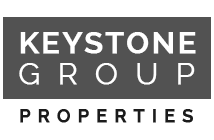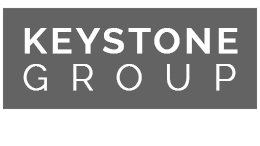Foreclosures Drawing Cash as 401K Returns Sag: Mortgages
Call Bob Cumming of Keystone Group Properties at 310-496-8122 for information about exclusive So CA real estate in Los Angeles County. Keystone Group Properties services coastal real estate from Newport Beach and Corona del Mar to Malibu and Santa Monica homes.
Foreclosures Drawing Cash as 401K Returns Sag: Mortgages
By Kathleen M. Howley – Nov 4, 2012 9:00 PM PT
David and Michelle Haisley from Fort Wayne, Indiana, weren’t happy with the performance of their retirement funds, so they made another investment – a foreclosed home for $27,000.
Haisley, a heating and air-conditioning technician, said he worked on the house before it went into default and decided to make an offer when he saw it listed at about a third the price of surrounding homes. They’ve already found tenants for the house and David said they’ll buy another foreclosure if they can find the right deal.
Investors bought about 66,780 homes in August, the highest since the beginning of the foreclosure crisis, according to Bloomberg calculations based on National Association of Realtors data.
Investors bought about 66,780 homes in August, the highest since the beginning of the foreclosure crisis, according to Bloomberg calculations based on National Association of Realtors data. Photographer: Matthew Staver/Bloomberg
“It’s an income stream for us, and when it’s time, we’ll sell it and make more money than we could from our 401K,” said Haisley, 49, who rents out the property for $900 a month for an annual return of more than 20 percent, excluding appreciation. “There’s nowhere for prices to go but up, so it seemed like a pretty safe bet.”
As the housing market recovers from the worst bust since the Great Depression, neophyte investors like the Haisleys are following the lead of private-equity firms like Blackstone Group LP, investing in properties they can pick up cheaply, rent and sell when values rise enough. Home prices rose 4.6 percent from a year earlier in August, the biggest gain since the end of the real estate boom in 2006, according to a CoreLogic Inc. index.
“The typical small-size mom-and-pop investor has two or three properties, looking at it as an income supplement with the possibility of being able to sell at some point when prices rise enough for them,” said Lawrence Yun, chief economist of the National Association of Realtors.
Stock Wary
Investors are becoming more comfortable with real estate after the six-year housing slump, which brought prices down nationwide by 35 percent, according to the S&P/Case-Shiller index. Many remain skeptical of stocks, even as the Standard & Poor’s 500 index has more than doubled since falling to a 12-year low in March 2009.
“I’d rather buy real estate than gamble on the stock market or get almost no return from putting my money in a bank,” said Barton Wallace, 60, a real estate investor and broker in Hingham, Massachusetts, who owns four rental properties. “I don’t have any problem getting tenants.”
Wallace, who turned to real estate four years ago when she couldn’t get a full-time job, has one client who cashed out his home’s equity to buy his first foreclosed home. Other clients are tapping retirement accounts for the same purpose, transferring their cash into self-directed Individual Retirement Accounts that allow them to make their own investing decisions, with returns going back into the accounts, she said.
Indirect Plays
Investors bought about 66,780 homes in August, the highest since the beginning of the foreclosure crisis, according to Bloomberg calculations based on National Association of Realtors data. Investors’ share was 18 percent of sales. About 90 percent of those homes went to people with fewer than 20 properties, Yun estimated.
“Some people are making an indirect real estate play by investing in funds that buy foreclosures to rent, but most of the demand is from small-scale investors who live in the community,” Yun said. “It provides a decent rate of return for them because rents are rising and prices are still low.”
The average U.S. rent rose to a record $1,086 a month in the third quarter, a gain of 3.3 percent from a year earlier, according to MPF Research in Carrollton, Texas. The vacancy rate fell to a 10-year low of 8.6 percent in the second quarter, according to the Commerce Department. There are about 40 million rental units in the U.S., compared with 75 million owner-occupied homes.
‘Risky Move’
For individual investors, “the demand is there, but it’s a risky move if you are putting all your eggs in that one basket,” said Greg Willett, director of research for MPF.
Even with rent gains, buyers of distressed properties to rent would need to get a discount of about 30 percent to get a yield of 8 percent, said Paul Diggle, a real estate economist for London-based Capital Economics Ltd. If investors are looking for 12 percent yields, they’d need to get a 50 percent discount, he said.
The simplest way to calculate yield is to subtract expenses from annual rent and divide by the cost of the property. A $125,000 home will yield about 8 percent a year if a tenant pays $1,200 a month in rent and monthly carrying expenses are $400.
That formula doesn’t account for the time a landlord may spend responding to disgruntled tenants and repairing burst water pipes, broken furnaces or leaky roofs, Diggle said. Many homes in foreclosure are neglected, which could lead to maintenance problems down the road, he said.
‘Sweat Equity’
“Small-scale investors may actually run at a loss on rental housing if their sweat equity is accounted for,” Diggle said.
Yovaldi Venter, a first-time real estate investor, is buying a foreclosed property using money from her retirement funds. She said she plans to buy her first property before the end of the year after transferring some of her 401K into a self-directed IRA this month.
Her target: a duplex on the south side of Jersey City priced at $60,000, a fifth of what it went for in 2008 when it last sold. Its two rental units bring in $2,000 a month, according to Venter, 45.
“It would be a buy-and-hold with an eye on the long-term gain — a stream of income for now, with the possibility of selling it when prices come back,” Venter said.
Gary Hippensteel, who owns six properties he rents in Indianapolis at about 10 percent yields, said he didn’t want to keep his money in a bank because it earns “next to nothing.”The highest yield for a one-year certificate of deposit in the U.S. last week was about 1 percent, according to Bankrate.com.
“People want the safety of having a tangible asset,”Hippensteel said. “While it’s still subject to volatility in the overall economy, you at least have an asset that people will need, because if they can’t buy a house they are going to have to rent.”
Santa Monica CA homes for sale


